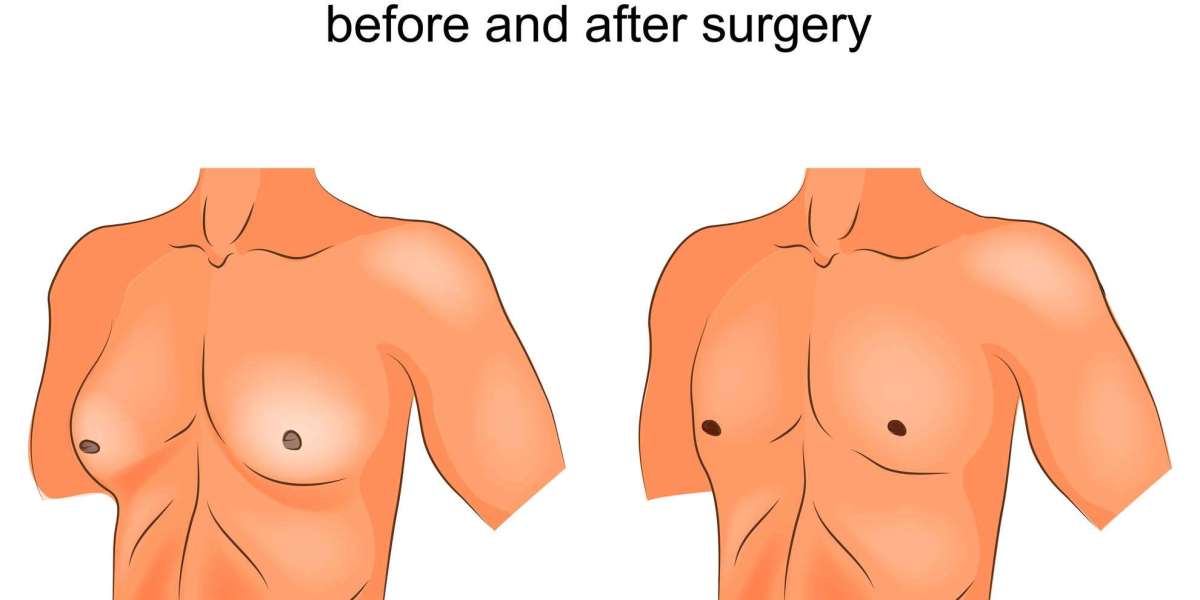Gynecomastia, a condition categorized by the enlargement of male breast tissue, is more common than one might think, with a significant percentage of the male population experiencing it at some point in their lives.
While various factors can cause gynecomastia, one of the primary culprits that frequently arises in discussions of this condition is the critical role played by hormonal imbalance in the development of gynecomastia. Therefore, comprehending the connection between hormonal imbalance and gynecomastia is crucial to establishing a clear understanding of the condition itself.
Gynecomastia is not an uncommon condition. In fact, it is estimated that it affects up to 65% of adolescent boys and approximately 50% of men over the age of 50. Understanding the prevalence of this condition is essential, as it highlights the significance of exploring the intricate connection between hormonal imbalance and gynecomastia.
What is Gynecomastia?
To comprehend the connection between hormonal imbalance and gynecomastia, we must first establish a clear understanding of the condition itself. Gynecomastia is the growth of additional breast tissue in males, leading to breast enlargement.
There are two primary types of gynecomastia: true gynecomastia, characterized by the proliferation of glandular breast tissue, and pseudo-gynecomastia, in which fat accumulates in the chest area. Gynecomastia is not as rare as one might believe. Studies have shown that it affects up to 65% of adolescent boys and 50% of men over the age of 50. Understanding its prevalence and the factors that contribute to its development is crucial.
The Role of Hormones in the Body
Hormones serve as the body’s messengers, regulating various physiological processes. These chemical messengers influence growth, metabolism, mood, and, importantly for our discussion, the development of secondary sexual characteristics. Essential hormones involved in gynecomastia are estrogen and testosterone.
Estrogen, often associated with females, plays an essential role in males as well. Testosterone, the primary male sex hormone, typically counterbalances the effects of estrogen. The balance between these hormones is vital for maintaining a healthy body, including the chest area.
Hormonal Imbalance: Causes and Factors
Hormonal imbalances can happen due to a variety of factors. These imbalances disrupt the equilibrium between estrogen and testosterone, setting the stage for gynecomastia development. Several factors contribute to hormonal imbalances, including:
- Aging: As men age, testosterone levels tend to decrease, making them more susceptible to imbalances.
- Medications: Certain medications, such as those used in the treatment of prostate conditions or anti-androgens, can disrupt the hormonal balance.
- Medical conditions: Conditions like Klinefelter syndrome, liver disease, and some cancers can affect hormone levels.
- Lifestyle factors: Poor dietary choices, lack of exercise, and obesity can contribute to hormonal imbalances.
The Connection Between Hormonal Imbalance and Gynecomastia
It’s essential to understand how hormone problems lead to gynecomastia. When hormones get mixed up, there can be too much of a hormone called estrogen in the body. Estrogen makes breast tissue grow, and if it’s too high compared to another hormone called testosterone, it can cause gynecomastia.
The balance between estrogen and testosterone in the male body is very delicate and works like a seesaw. When estrogen goes up, or testosterone goes down, it tips the balance and can lead to gynecomastia. This balance can change because of things that happen naturally in the body or because of things from the outside.
Medical Conditions and Medications
Certain medical conditions and medications have a close association with hormonal imbalances and an increase in the risk of gynecomastia. For example:
- Puberty: Hormonal changes throughout puberty are a common cause of gynecomastia. It usually goes away on its own, but dealing with it can be not easy emotionally for teenagers.
- Klinefelter syndrome: Low testosterone levels and an increased likelihood of developing gynecomastia may result from this inherited disorder.
- Liver disease: Liver dysfunction can impair hormone metabolism, leading to hormonal imbalances and, in some cases, gynecomastia.
Medications also play a significant role in gynecomastia development. Some anti-androgens, which doctors prescribe for prostate conditions, can disrupt the hormonal balance, as can the use of anabolic steroids, anti-anxiety medications, and certain herbal supplements.
Hormonal Imbalance and Gynecomastia in Adolescents
When you’re a teenager, your body goes through significant changes. It can make teenagers more likely to get gynecomastia. The hormones in your body can get mixed up during this time. For most teenagers, this problem goes away on its own in a year or two, but it can make you feel really upset.
Moreover, it can make you feel like you’re being looked at or judged by other people, and it can make you feel like you’re not as good as you used to be. Teenagers who have gynecomastia should talk to someone who can help them with their feelings and let them know that it’s usually not a big problem and will go away.
Hormonal Imbalance and Gynecomastia in Adults
Gynecomastia doesn’t only happen to young people. It can also affect grown-up men, and getting older is a big part of it. When men get older, their testosterone levels usually go down, which can make them more likely to have problems with their hormones and get gynecomastia.
But growing older isn’t the only reason why gynecomastia happens to adults. Some people, like bodybuilders and athletes, use things like anabolic steroids to make their bodies stronger. But this can mess up their hormones and raise the chances of getting gynecomastia. Even though they want to be more muscular, it might lead to a problem they don’t want to have.
Diagnosis and Treatment
Diagnosing gynecomastia involves a thorough medical examination and often requires blood tests to assess hormone levels. Once diagnosed, various treatment options are available. These options include:
- Lifestyle changes: In some cases, gynecomastia can be managed through healthy lifestyle modifications, such as weight loss and exercise.
- Medications: Certain medications can help adjust hormone levels and reduce breast tissue in some cases.
- Surgery (mastectomy): For severe cases or when the condition persists despite other interventions, surgical removal of excess breast tissue may be recommended.
It’s essential to emphasize that anyone experiencing gynecomastia or concerned about hormonal imbalances should seek medical advice. Self-diagnosis and self-treatment are not advisable.
Lifestyle Modifications for Hormonal Balance
Preventing hormonal imbalances and gynecomastia involves adopting a healthy lifestyle. Here are some recommendations for maintaining hormonal balance:
- Diet and nutrition: Consume a balanced diet rich in essential nutrients and avoid excessive consumption of soy-based products, which contain phytoestrogens that may affect hormone levels.
- Exercise and weight management: Regular physical activity can help maintain a healthy weight and promote hormonal balance.
- Stress management and adequate sleep: Reducing stress and getting enough sleep is crucial for hormonal health.
Living with Gynecomastia
The feelings and thoughts that gynecomastia can bring are significant. Dealing with gynecomastia can be challenging, especially for teenagers and people who worry about how their body looks. Some places and people can help you cope with gynecomastia surgery.
Some groups and doctors know a lot about gynecomastia and hormones. They can give you information and help you with your feelings. They are there to support you emotionally and provide you with the help you need.
Hormonal Imbalance and Gynecomastia: Implications for Men’s Health
The connection between hormonal problems and gynecomastia is quite complex and has a significant impact on men’s health. Hormones, especially estrogen and testosterone, play a key role in causing gynecomastia. People of different ages can be affected by this condition, and it’s closely linked to hormone issues.
Different things can mess up your hormones, like getting older, taking certain medicines, having medical problems, or making unhealthy lifestyle choices. Understanding these factors and how they affect your hormones is really important for your health.
It’s also important to stress the significance of leading a healthy lifestyle. Eating well, staying active, managing stress, and getting enough sleep can help you keep your hormones in balance and reduce the chance of getting gynecomastia.
This content is taken on given link: https://timesofrising.com/hormonal-imbalance-and-gynecomastia-is-there-a-connection



